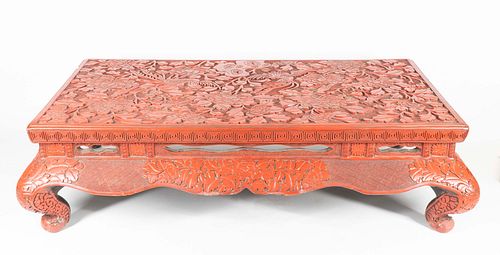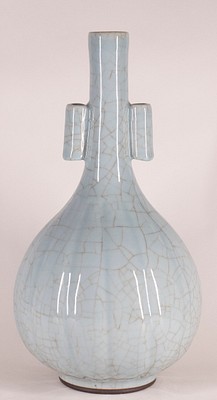Red Cinnabar Lacquer Phoenix and Peony Kang Table
Lot 57
About Seller
Keno Auctions
127 East 69th Street
New York, NY 10021
United States
Keno Auctions is renowned for our expertise in fine and decorative arts. With more than 30 years experience, founder Leigh Keno has established a brilliant team of experts specializing in fine art, furniture, decorative arts and jewelry.
Categories
Estimate:
$1,000 - $1,500
Absentee vs Live bid
Two ways to bid:
- Leave a max absentee bid and the platform will bid on your behalf up to your maximum bid during the live auction.
- Bid live during the auction and your bids will be submitted real-time to the auctioneer.
Bid Increments
| Price | Bid Increment |
|---|---|
| $0 | $25 |
| $100 | $100 |
| $2,000 | $250 |
| $5,000 | $500 |
| $30,000 | $2,500 |
| $50,000 | $5,000 |
| $100,000 | $10,000 |
| $500,000 | $10,000 |
| $1,000,000 | $10,000 |
About Auction
By Keno Auctions
Apr 7, 2021
Set Reminder
2021-04-07 09:00:00
2021-04-07 09:00:00
America/New_York
Bidsquare
Bidsquare : Estates and Asian Works of Art
https://www.bidsquare.com/auctions/keno/estates-and-asian-works-of-art-6741
Keno Auctions Leigh@kenoauctions.com
Keno Auctions Leigh@kenoauctions.com
- Lot Description
Early Qing Dynasty Probably 17th Century
The rectangular top carved with flowering branches, two Phoenix birds and peonies, over the waisted pierced skirt, above a bulged, scalloped apron, on short cabriole legs ending in scroll feet.
H. 7 1/2 in., W. of top 30 in., D. of top 17 1/4 in.
Note: "The phoenix is the emperor of all birds, and like the qilin, it appears only in times of peace and prosperity. It is believed that the phoenix's appearance in China augers the emergence of an able ruler or the arrival of a great man, for it appeared when Confucius was born. The phoenix is the motif for the empress of China, ornamenting her crown as well as her clothing. The peony symbolizes prosperity, happy life, good luck, love, and rebirth of relationships and wealth. For a very long time, peonies were exclusively flowers of Chinese emperors. Together the Phoenix ('feng') and peony ('fuguihua') = may there be wealth, rank and good fortune ('fugui jixiang'. The phoenix dallying with the peony is an auspicious design ('fengxi mudan', 'fengchuan mudan'). When the king of birds is paired with the king of flowers, together they augur great blessings. Footnotes: Bartholomew, Terese Tse, Hidden Meanings in Chinese Art, Asian Art Museum, San Francisco, Ca 2006
Condition: Age appropriate losses and old repairs to feet and some minor chips to edge of top. - Shipping Info
-
Buyer Pays Shipping Cost
-
- Payment & Auction Policies
-
Available payment options
-
-
- Buyer's Premium



 EUR
EUR CAD
CAD AUD
AUD GBP
GBP MXN
MXN HKD
HKD CNY
CNY MYR
MYR SEK
SEK SGD
SGD CHF
CHF THB
THB





































